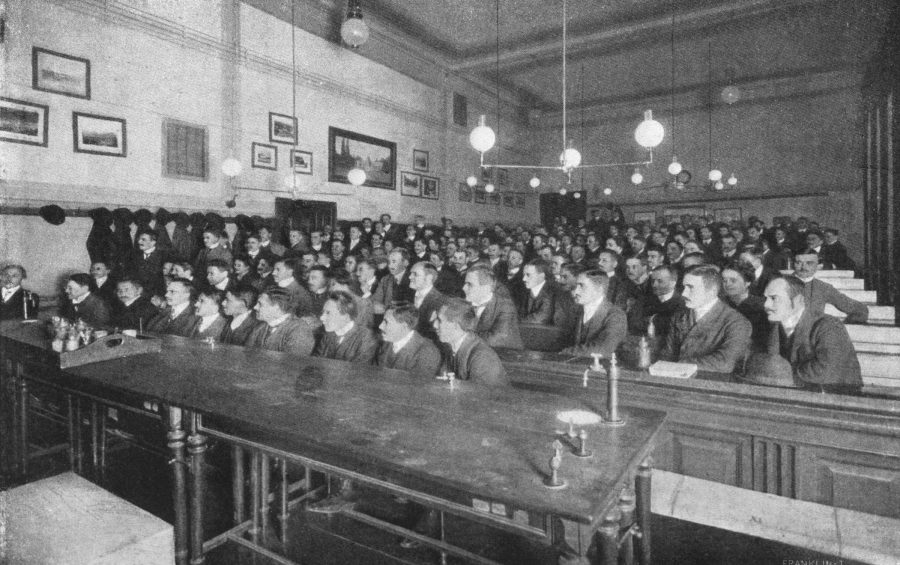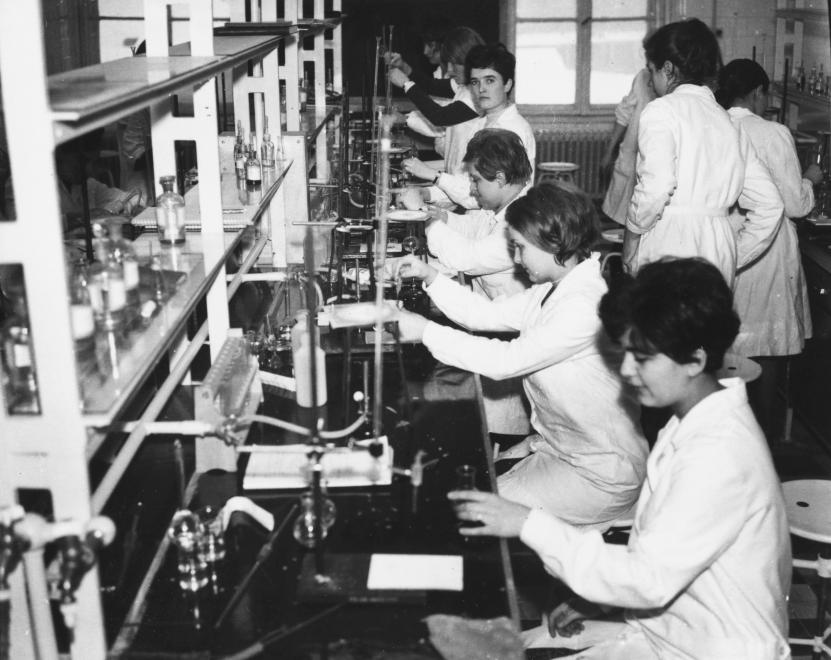During the course of the university’s near-250-year history, the language of education and the forms of training have gone through several changes, in line with the needs and requirements of society. How did Hungarian-language teaching come to be, and how did the various foreign language programs start? How did the different training specialties evolve into their own faculties? In the third part of our series in the lead-up to the 250th anniversary of the university’s founding, we will take a brief look at these developments.
Foreign language programs at universities have become general practice by today, but it is perhaps less obvious that the presence of foreign students and foreign-language education is not a new development, but can actually be considered the original starting position. The first 100 years of our university was also characterized by a multi-lingual environment, as well as great diversity in the range of fields that were taught. In line with the needs and traditions of the 18th century, training did not only focus on medical doctors, but there were also lower-level courses for masters of surgery, pharmacists, midwives and, starting from 1787, veterinarians as well. Additionally, in a supplementary capacity, there were also ophthalmology, dentistry and master of obstetrics programs for students that have completed their master of medicine or surgery courses. The language of education at the medical courses, which were considered to be higher-level, was Latin, in line with European practice, but this could not be made a requirement for the other, lower-level courses, due to the weaker Latin skills of the applicants. Thus, these courses were held in the national languages, Hungarian and German, i.e. the languages that were the most widely used in the country at the time. Starting from 1808, Slovakian was also used in the teaching of midwife and veterinarian courses. Hungarian became the country’s official language in 1844, but even this did not translate fully into the language of education then, nor after the defeat of the 1848–1849 revolution, when German was made the official language. The full transition to Hungarian as the language of education was made only after the Austro-Hungarian Comprise of 1867. With Hungarian becoming the exclusive teaching language, the number of foreign students – at least those who did not speak Hungarian at all – declined.
 Veterinary training was separated into a new, independent institution in 1851. The education reform of 1872 abolished the master of surgery course, and surgeon training was merged with medical training. Since then, medical doctor diplomas have been universal (i.e. medicus universalis). The training of midwives received its own organizational unit in 1881 with the establishment of what was then called the 2nd Department for Women, while it later split off from the department under the name Midwife Training Institute.
Veterinary training was separated into a new, independent institution in 1851. The education reform of 1872 abolished the master of surgery course, and surgeon training was merged with medical training. Since then, medical doctor diplomas have been universal (i.e. medicus universalis). The training of midwives received its own organizational unit in 1881 with the establishment of what was then called the 2nd Department for Women, while it later split off from the department under the name Midwife Training Institute.
It is less well-known that from 1959 to 1969, there was also a German-language program on the Faculty of Medicine of what was then called the Medical University of Budapest (BOTE). The reason behind this was that the higher education system of communist East Germany was unable to immediately replace the German doctors who fled to the West, therefore they had to start including other Socialist countries in their training programs. As a result, in October 1959, 122 German medical students and one educator arrived in Hungary. During this ten-year period, a total of 312 East German students passed through the university. Following this history, the regular German-language program started in 1983, which was joined in 1989 by the English-language program. With the restoration of the foreign-language programs, the university essential returned to its original traditions, although the role that Latin once played in the scientific world has since been replaced by English. Today, one-third of the university’s students are foreigners, arriving from 70 countries around the world to complete their studies.
 The various fields of training that developed over the history of the medical faculty became organizationally separate in 1955. The medical faculty that was spun off independently under the BOTE name in 1951 functioned for years as a single-faculty university, led by a dean, although one who essentially had the competence of a rector. In 1955, the original single faculty was divided into three, so the legal predecessor of all three faculties is the same. The largest one, which had the most students, became the Faculty of Medicine. The various pharmacy departments were packed into the Faculty of Pharmaceutical Sciences, but training remained split between BOTE and the Faculty of Natural Sciences of ELTE. The independent training program for dentists, separate from the faculty of general medicine, started at the university in September 1952. In the previous system, the path to becoming a dentist led through a medical specialist program. This education reform made possible the establishment of the Faculty of Dentistry, at the same time as the other two faculties. Thus the foundations of today’s faculty structure was created, which remained essentially unchanged until the integration of 2000. And with the addition of the Faculty of Health Sciences and the Faculty of Health and Public Administration (2010), and the András Pető Faculty (2017), Semmelweis University now offers professional training that covers the full spectrum of health care. (The history of the latter faculties will be discussed in a later part of our historical series.)
The various fields of training that developed over the history of the medical faculty became organizationally separate in 1955. The medical faculty that was spun off independently under the BOTE name in 1951 functioned for years as a single-faculty university, led by a dean, although one who essentially had the competence of a rector. In 1955, the original single faculty was divided into three, so the legal predecessor of all three faculties is the same. The largest one, which had the most students, became the Faculty of Medicine. The various pharmacy departments were packed into the Faculty of Pharmaceutical Sciences, but training remained split between BOTE and the Faculty of Natural Sciences of ELTE. The independent training program for dentists, separate from the faculty of general medicine, started at the university in September 1952. In the previous system, the path to becoming a dentist led through a medical specialist program. This education reform made possible the establishment of the Faculty of Dentistry, at the same time as the other two faculties. Thus the foundations of today’s faculty structure was created, which remained essentially unchanged until the integration of 2000. And with the addition of the Faculty of Health Sciences and the Faculty of Health and Public Administration (2010), and the András Pető Faculty (2017), Semmelweis University now offers professional training that covers the full spectrum of health care. (The history of the latter faculties will be discussed in a later part of our historical series.)
Dr. László Molnár
Central Archives
Translation: Tamás Deme


